
Jordan Feil, Director of Marketing at Navori Labs discusses the future trends of digital signage which will feature artificial intelligence, mobile integration advanced marketing analytics and more.
Embracing The Future of Digital Signage
Digital signage has been revolutionizing the way businesses communicate with their target audience. From advertising and promotions to real-time news updates and emergency alerts, digital signage has come a long way from static and traditional modes of communication.
In the past few years, we have seen significant advancements in digital signage technology, pushing the envelope further in the realm of digital communication. In this article, we will explore some of the digital signage trends and technologies that are shaping the future of the industry. Let’s dive right in!
1. Interactivity
With the advancement in technology, digital signage is no longer limited to static images and videos. Interactive displays that engage users have become increasingly popular. Examples include touchscreens, motion sensors, and camera-based applications that allow users to interact with the content on the screen.As these technologies continue to evolve, interactivity will become even more engaging and effective. This will also help businesses gather better audience feedback and more relevant behavioral data.
The potential of interactivity is limitless, and it will change the way consumers interact with digital signage by introducing a whole new level of engagement.
It’s important to note that modern CMS solutions, such as Navori QL, can support multiple types of sensors and devices right out of the box. However, the QL software’s APIs help “future-proof” your investment as it lets you support future technologies as they emerge.
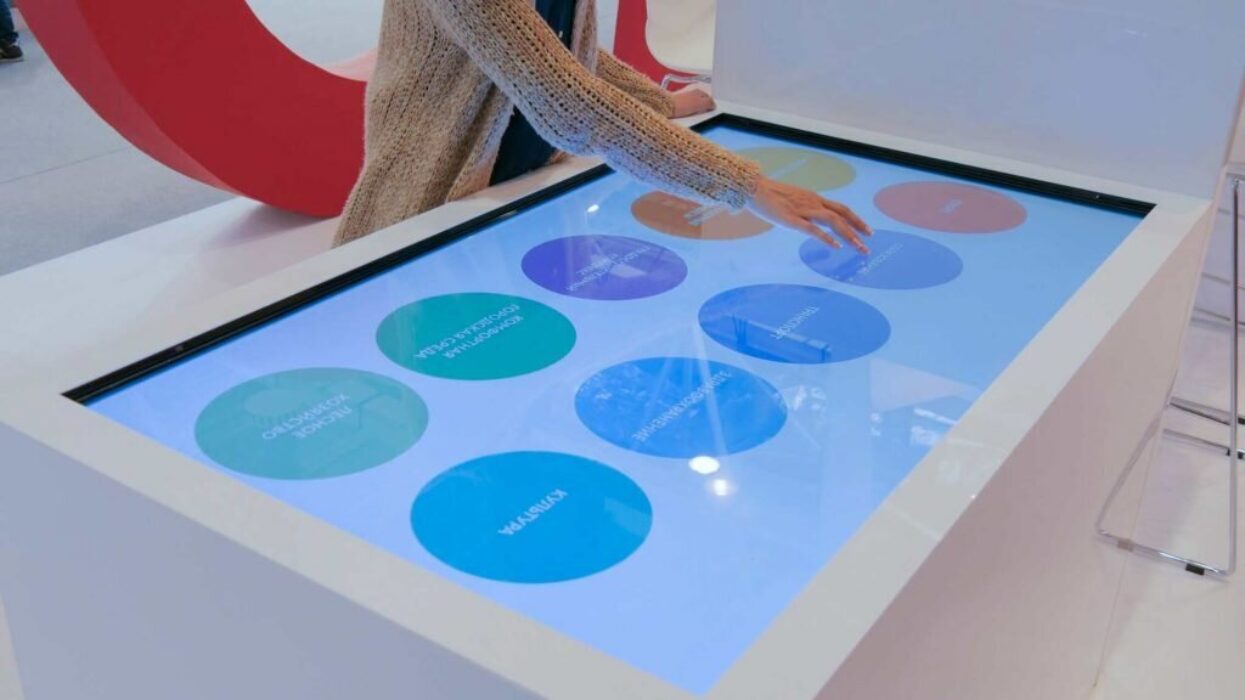
2. Artificial Intelligence
AI technology has been an emerging trend in the digital signage industry. It has the potential to take content personalization to a new level by offering customized contentbased on viewers’ demographics, location, and behavior. AI can also leverage data analytics to track and optimize the impact of digital signage campaigns. This feature will ensure advertisers’ content reaches the right audience at the right time while keeping brand owners informed aboutthe success of their campaigns.
Soon, AI will also help CMS software users become more productive as there will be less manual programming. Instead, users will provide instructions in plain English and the AI chatbot will handle all the content scheduling tasks. No more creating and scheduling playlists from scratch! You will simply describe what you need, and the chatbot will take care of the rest.
3. Mobile Integration
The trend towards mobile integration is a significant development in the future of digital signage. By syncing up digital signs with mobile devices, businesses can create a seamless and omni-channel advertising experience. For example, a mobile app could provide users with customized recommendations for products based on their shopping history, and the digital sign could display these products on a nearby screen. Mobile integration already makes digital signage more accessible and interactive for the audience, but it will increasingly provide more insightful data about each customer’s behavior.
On the business side, we also see mobile apps used as a bridge between a centralized CMS and remote end users for hyper-localized content updates. Think of a salesperson who interrupts the scheduled programming to bring up a product’s specifications or video to better serve their in-store customer. The next generation of mobile CMS apps, such as Navori’s QL Mobile, make programming changes faster and more efficient than traditional methods.
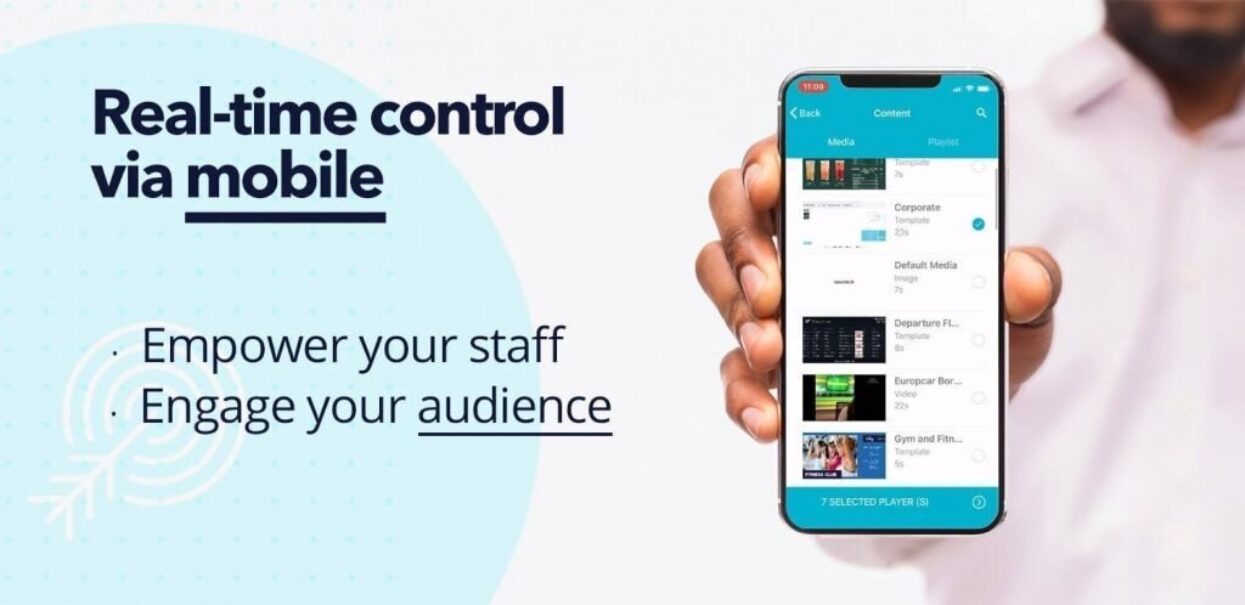
Rule Base Content Management
With the growth in digital signage and its rapid spread across various industries comes the need for automated content management. Smart content management systems that use rule-based programming have started to emerge. These modern CMS platforms can automatically manage and update content across multiple screens in various locations without the need for human interaction.
The Navori QL CMS platform already lets businesses automate their content management and messaging by enabling real-time updates based on external factors (for example, the weather, stocking levels, competitive pressures, staffing, customer traffic, etc.). With rule-based content management, your messaging changes instantly without any user intervention which improves effectiveness and accuracy.
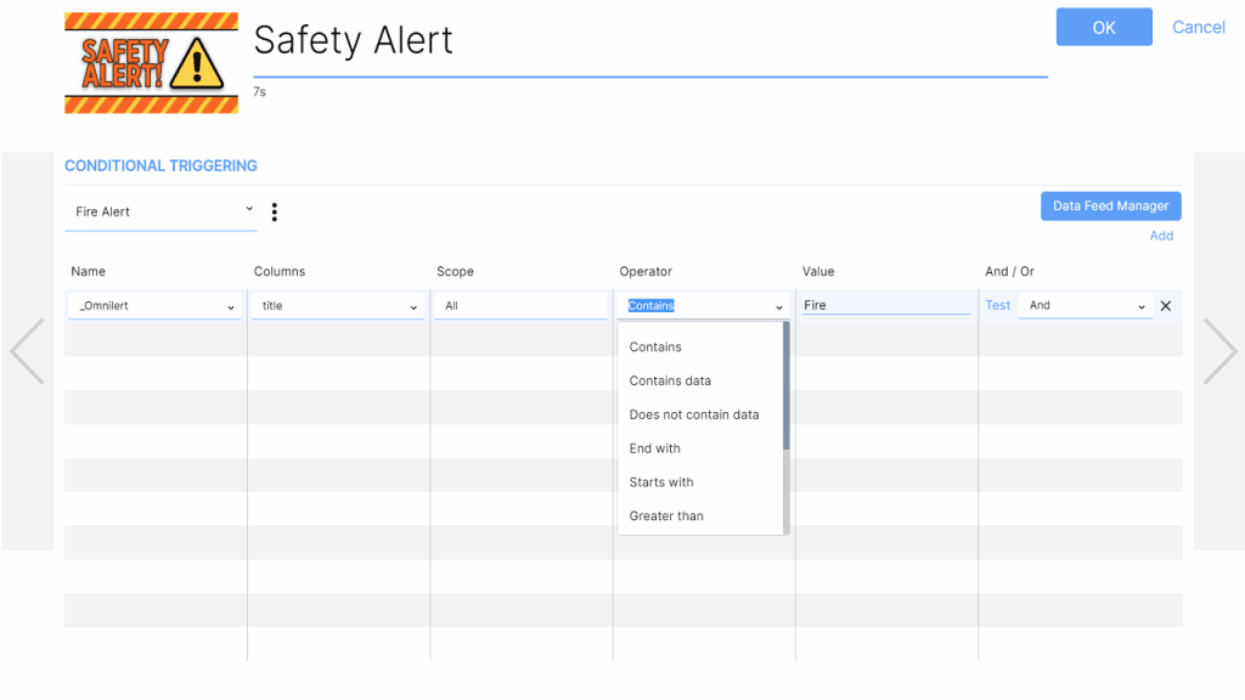
5. Location Based Signage
Location-based signage is another emerging trend in digital signage. This technology uses geolocation to provide targeted content based on a viewer’s location. For example, a store may provide discounts on a specific product to viewers in the vicinity of the store. This technology can provide valuable data on consumer behavior and boost sales by providing personalized, relevant content at, or near, the point of decision.
6. Computer Vision and Advanced Marketing Analytics
Just like location-based signage, computer vision is another technology that is beginning to take hold in the digital signage space. When your QL CMS software is linked to Navori’s Aquaji computer vision and AI software, businesses gain additional insights into consumer behavior. This data is increasingly being used to drive the content on menu displays at your local restaurant drive-through.
For example, Aquaji can detect and analyze visual data such as a vehicle make or license plate to determine return visitors. With this information, the system can link previous menu choices to individual customers so it can make better recommendations.
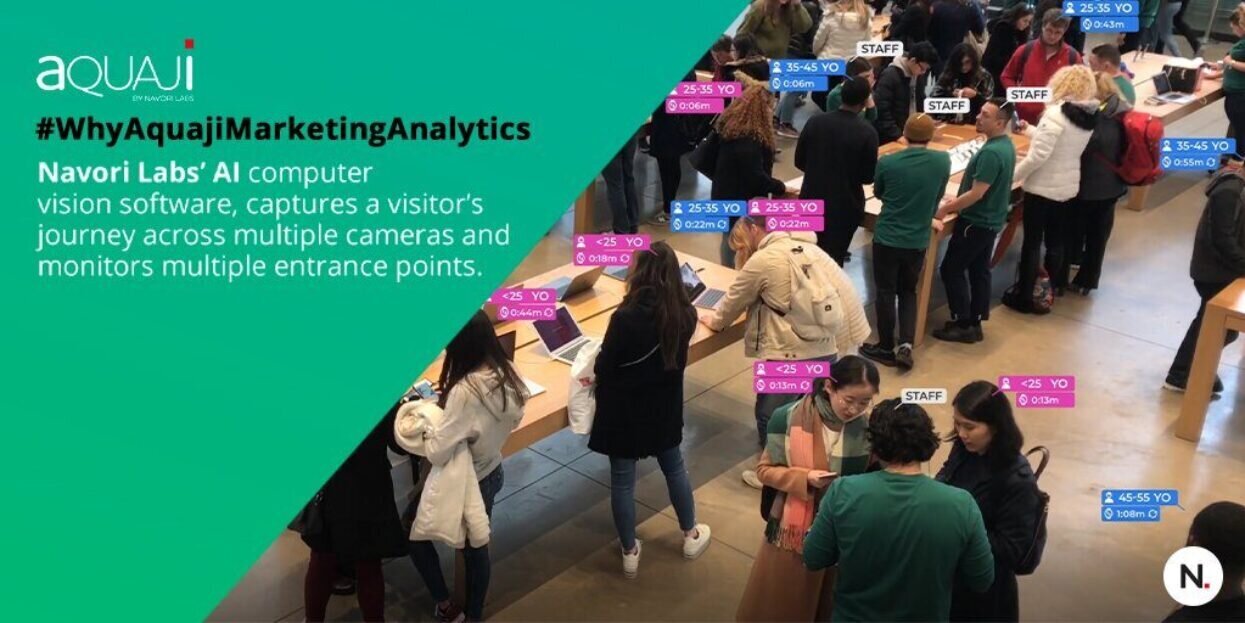
7. Internet of Things
The internet of things (IoT) refers to the interconnectedness of devices and systems that communicate with and learn from each other. In the context of digital signage, IoT can be used to produce data for triggering content or to detect a location’s brightness levels so the screen’s luminance is automatically adjusted. IoT can also be used to monitor the local temperature or detect pedestrian traffic and pass along this information to the CMS to trigger specific content on any digital signage display. Expect this combination of IoT and advanced data analytics to become increasingly popular as these technologies continue to evolve.
What Other Trends Can We Expect?
Content Personalization
One key trend we are seeing in digital signage is the personalization of content. With advancements in artificial intelligence and machine learning, we can now collect data about individual users’ behaviors and preferences, enabling us to display content that is more tailored to their interests.
For example, imagine a digital sign in a shopping center that recognizes a user’s previous purchases and displays promotional content about products they might be interested in. As a result, the personalization of digital signage creates a more engaging and relevant experience for the viewer.
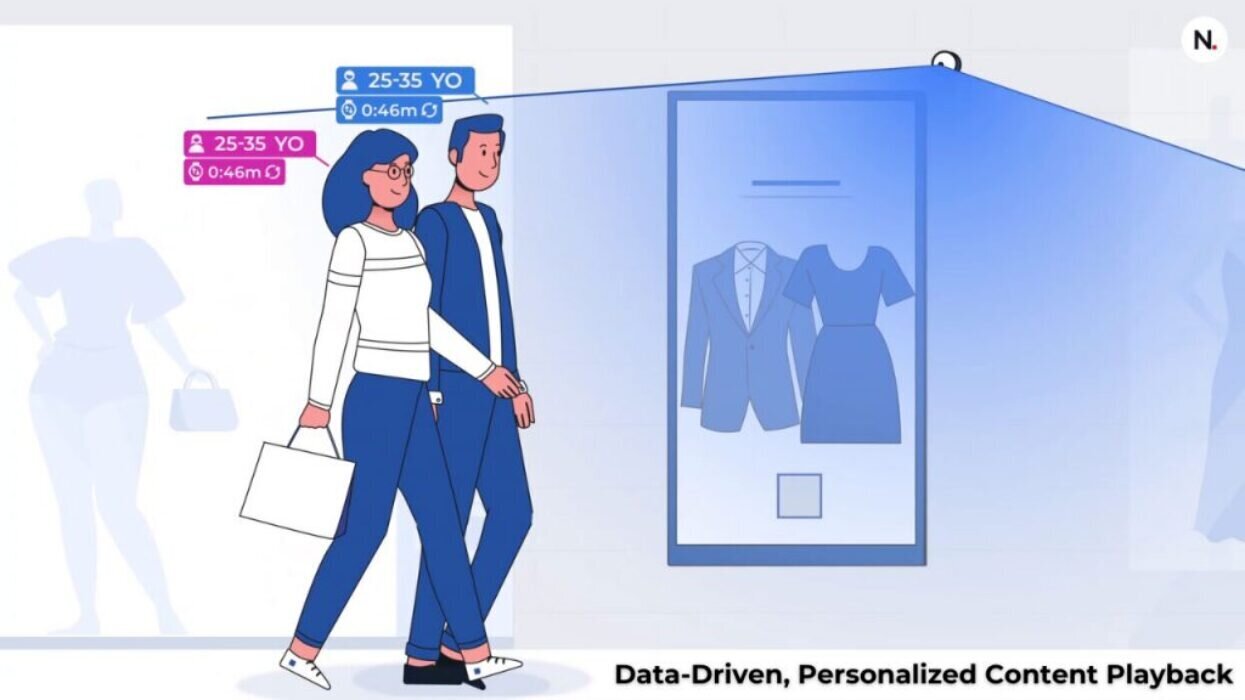
Augmented Reality (AR)
As digital signage becomes more interactive, we are witnessing the rise of augmented reality (AR) technology. AR utilizes digital overlays to enhance the viewer’s perception of reality, allowing them to experience a blend of the physical and digital world. For example, an AR-enabled digital sign could allow users to visualize furniture in their home or preview new clothing styles virtually. The use of AR in digital signage is a powerful tool for marketers, as it provides an engaging and memorable way to promote products or brands.
Sustainability
As the world becomes more environmentally conscious, companies are looking for ways to reduce their carbon footprint and make their operations more sustainable. Digital signage is no exception, and we are seeing a rise in sustainable digital signage solutions that focus on reducing energy consumption. For example, the use of LED screens is becoming increasingly popular, as they consume less power than traditional screens. Additionally, some digital signage companies are investing in solar-powered display units or recycling programs to minimize their environmental impact. The future of digital signage is not just about creating innovative displays, but also being responsible and environmentally conscious.
In Conclusion
These digital signage future trends look promising, with emerging technologies such as interactivity, artificial intelligence, mobile integration, rule-based content management, and the internet of things. These advancements will not only revolutionize the digital signage industry but also enhance customer experiences. Increasingly, digital signage will become an integral part of our daily lives, and businesses will embrace these new technologies if they aim to thrive in the digital age.
Discover the latest innovations in signage at European Sign Expo 2024 Europe’s leading signage and visual communications exhibition. Taking place from 19th – 22nd March 2024 at RAI Amsterdam, Netherlands. Register to visit here and use promo code ESEJ407 to receive a discount of 30 euros. This code is valid until 18th February.